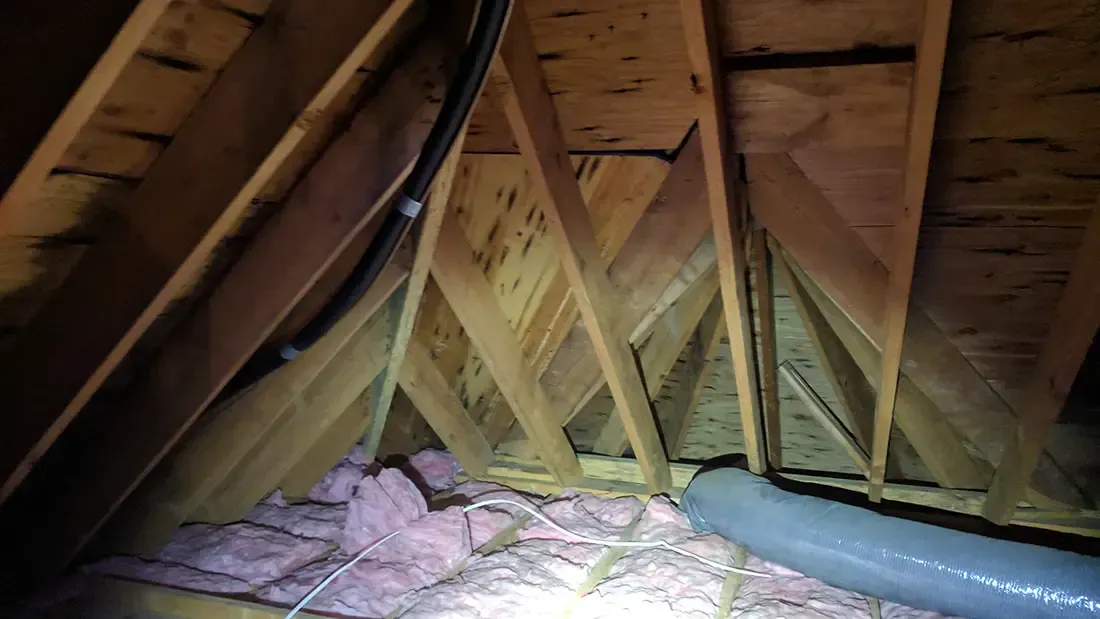Could Your Attic or Crawl Space Mold Be Causing Chronic Health Issues?

You may not realize it, but persistent health problems like constant fatigue, brain fog, headaches, and joint pain could stem directly from hidden mold in your attic or crawl space. Many struggle with these symptoms for years without connecting them to mold exposure. Particularly in humid coastal areas like Myrtle Beach, where moisture infiltration is common, the problem can be severe yet invisible. Attics and crawl spaces are often overlooked, quietly harboring mold that slowly affects your health without you noticing.
Addressing hidden mold promptly isn't merely about preventing structural damage to your home—it's critical for protecting your health. Mold growing unnoticed in attics and crawl spaces releases spores and toxins into your living environment, creating conditions that can lead directly to Chronic Inflammatory Response Syndrome (CIRS), a serious condition that won't resolve until mold exposure ends.
How Exactly Does Mold in Attics and Crawl Spaces Affect Your Health?
Mold doesn't just sit harmlessly in hidden areas. It continuously releases microscopic particles and toxins that infiltrate your indoor air, potentially making you and your family chronically ill. Research from the World Health Organization clearly shows that indoor mold exposure significantly increases respiratory symptoms and chronic inflammation, laying the groundwork for conditions like CIRS. With each breath you take, mold toxins from these concealed areas enter your lungs, triggering an immune response that your body struggles to control.
In Myrtle Beach, attic and crawl space mold thrives due to constant humidity, frequent rain, and mild temperatures. Crawl spaces can reach humidity levels well over 80%, creating the perfect environment for mold growth. If your home's crawl space or attic ventilation is inadequate, mold can flourish unnoticed, contaminating the rest of your home's air through small leaks and gaps. Studies from building science experts indicate that up to 40% of the air you breathe on the first floor of your home could originate from your crawl space, emphasizing how significantly hidden mold can impact indoor air quality and health.
Key Signs Your Attic or Crawl Space May Have Mold Issues
Mold problems in these hidden spaces often go unnoticed because homeowners rarely inspect them closely. However, several clear signs can alert you:
· Persistent musty odors, particularly noticeable when HVAC systems run
· Visible moisture or condensation on attic beams, insulation, or crawl space walls
· Dark discoloration on wooden structures, insulation, or HVAC ductwork
· Chronic allergy-like symptoms or unexplained respiratory issues that improve when away from home
Noticing even one of these indicators is reason enough for concern and immediate professional inspection.
How Does Mold Exposure Specifically Trigger CIRS?
Chronic Inflammatory Response Syndrome occurs when the immune system continuously reacts to mold toxins inhaled from contaminated environments like mold-infested attics and crawl spaces. Unlike typical allergic reactions, CIRS is systemic and persistent. Your body remains stuck in a state of inflammation because it cannot eliminate the ongoing exposure.
According to peer-reviewed studies, approximately one-quarter of the population is genetically predisposed to developing CIRS after prolonged mold exposure. CIRS's symptoms are diverse and involve multiple body systems, making it frequently misdiagnosed as chronic fatigue or generalized inflammation. Effective treatment starts by completely removing exposure to mold sources—something only achievable by thoroughly inspecting and addressing hidden mold problems in your attic and crawl space.
Why Professional Mold Inspection Matters
Because mold in attics and crawl spaces is often hidden, professional inspection is essential for accurate identification and remediation. At Mastertech Environmental, our comprehensive inspection process specifically targets concealed mold threats.
· Detailed visual assessment of attic and crawl space areas
· Moisture mapping to precisely locate hidden water sources
· Thermal imaging scans to identify mold-friendly cold spots or moisture buildup
Advanced air quality testing, including surface and airborne mold samples analyzed by third-party accredited laboratories
Our certified inspectors provide clear, detailed reporting so you fully understand your home's mold condition. This level of detailed inspection ensures mold sources are accurately located and effectively removed, stopping ongoing exposure and giving your body a chance to recover from CIRS.
Take Action Now to Protect Your Health
If you or your family members suffer unexplained health symptoms consistent with mold-related illness, don't wait for them to worsen. Hidden mold in your attic or crawl space could silently damage your health every day. Mastertech Environmental's certified mold inspectors can pinpoint mold sources and provide detailed, actionable solutions for complete remediation.
Contact Mastertech Environmental of Myrtle Beach today at 843-236-3399 to schedule your professional mold inspection. Your health depends on knowing what's hidden in your home and addressing it decisively.



